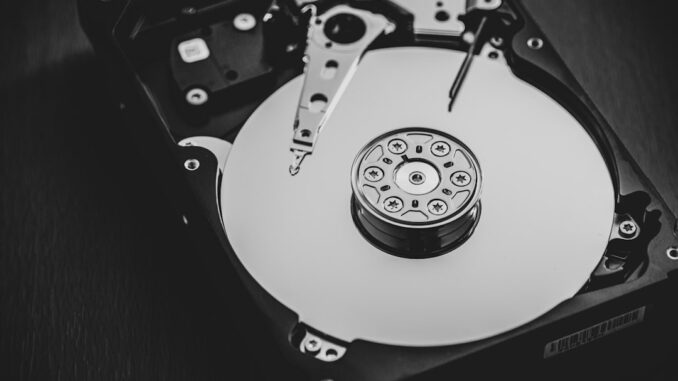
Summary
This article explores the vital role of modern backup systems in enhancing cyber resilience. It examines how these systems safeguard against evolving cyber threats, ensuring business continuity and minimizing data loss. The article further delves into key features of modern backup solutions and their significance in today’s digital landscape.
Protect your data with the self-healing storage solution that technical experts trust.
** Main Story**
Let’s face it, modern backup systems aren’t a nice-to-have anymore; they’re an absolute must. In today’s hyper-connected world, cyberattacks are getting seriously sophisticated, and frankly, organisations need to prioritise cyber resilience if they want to survive, let alone thrive. Think of modern backup technology as a cornerstone of that resilience, giving businesses the power to bounce back quickly from data loss, whether it’s due to some nasty cyberattack, a natural disaster, or even just plain old human error.
The Evolution of Backup Technology
Remember those old tape backups? I shudder just thinking about them. They’re often just, well, inadequate against modern threats. They’re slow, cumbersome, and a real pain when it comes to security; they’re physically vulnerable to damage or theft. And let’s be honest, restoring data from tapes can take forever, meaning massive downtime. Modern backup systems? They’re different, they leverage cloud tech and advanced software to solve these problems. Faster backup and recovery speeds, enhanced security, and better scalability? Yes, please!
Key Features of Modern Backup Systems
So, what makes these modern backup systems so special? Here’s a breakdown of some key features that really boost cyber resilience:
-
Cloud Integration: Cloud-based backups mean offsite data protection, shielding against disasters and those pesky ransomware attacks targeting your local infrastructure. It’s a bit like having a safety deposit box in the sky, you know?
-
Automation: Automated backup schedules? Lifesavers! Data gets backed up regularly, no manual intervention needed. Say goodbye to human error.
-
Immutability: Immutable backups are data copies that cannot be changed or deleted, even by malicious actors. This guarantees your data’s integrity, no ifs, ands, or buts. Think of it like a digital time capsule.
-
Rapid Recovery: Modern solutions allow swift data restoration, which means less downtime and a quicker return to normal after an incident. I mean, who wants to be down for days? Not me!
-
Data Deduplication and Compression: These features optimize storage by getting rid of redundant data and compressing backups, meaning lower storage costs. It’s all about efficiency, right?
-
Integration with Cyber Security Platforms: Modern backup systems often link up with SIEM (Security Information and Event Management) and other security platforms, giving you a full picture of your security and enabling proactive threat detection. It’s like having an extra set of eyes watching your back.
The Role of Modern Backups in Cyber Resilience Strategies
Modern backups? They’re not just for data recovery anymore. They’re a vital part of any solid cyber resilience plan. It’s essential to see backups as a security measure, protecting against all sorts of threats.
-
Ransomware: Immutable backups let you recover data without paying ransoms, effectively neutralising ransomware attacks. Take that, hackers!
-
Data Breaches: If you have a data breach, backups give you a clean copy of your data, letting you restore systems to a pre-breach state. It’s like hitting the reset button.
-
Natural Disasters: Cloud-based backups make sure your data is available even if your physical infrastructure gets damaged or destroyed. You know, just in case that rogue wave hits your office.
-
Insider Threats: Backups protect against data deletion or modification, accidental or malicious, by those inside your company. It’s a safety net, just in case someone has a bad day.
Best Practices for Implementing Modern Backup Systems
To really get the most out of modern backups, you need to follow some best practices:
-
3-2-1 Backup Strategy: Keep three copies of your data on two different storage types, with one copy offsite. It’s a golden rule for a reason.
-
Regular Testing and Validation: Make sure you’re running regular tests to confirm backup integrity and recovery procedures. You don’t want to find out your backups are broken during an emergency, do you?
-
Security Hardening: Implement rock-solid security measures to protect your backup infrastructure from unauthorized access. Treat your backups like Fort Knox.
-
Data Encryption: Encrypt your backup data, both when it’s moving and when it’s sitting still, to guard against data breaches. It’s like putting your data in a locked box inside a vault.
Conclusion
In today’s ever-changing threat landscape, prioritising cyber resilience is vital. Modern backup systems aren’t just a technological step forward, they are a critical strategic move. By adopting modern backup solutions and sticking to best practices, you can boost your defenses, reduce data loss, and ensure business continuity. It’s an investment in your organisation’s future, protecting it’s data and operations from constantly evolving cyber threats, isn’t that worth it? I think it is.

